Everything You Need To Know To Start a Successful Review Blog

When you buy something through one of the links on our site, we may earn an affiliate commission.
Are you thinking about starting a review blog but need some guidance?
In this post, you will learn how to start a product review blog, step-by-step.
By the end of this complete guide, you will know:
- Why it's important to choose a niche (and how to choose one)
- A simple way to name your review blog
- How to setup and launch your blog quickly
- How to write quality product reviews
- Ways to monetize a review site
And lots more.
There are 9 steps for you to follow, examples of successful review blogs, and tips for how to write product reviews that Google and your readers will love.
Let's dive right in.
Contents
How to Start a Review Blog in 9 Simple Steps
Here are the steps you need to take to start a product review blog.
Once you’ve completed steps 1 to 5, you’ll only have to focus on the blogging process after that which is briefly covered in steps 7 and 8.
1. Choose your niche
The first step when starting any blog is to choose your niche.
Why?
Because a niche review blog is much easier to grow than a generic review blog and they have more perceived authority.
Think about it this way:
If you’re looking for reviews on laptops, you’re more inclined to trust a tech blog over a blog that reviews everything.
It will also be faster to rank a niche blog in Google, which will be your main source of traffic.
You can get further help by reading our post on how to find your blog niche.
So what niche will you pick? Some common options include:
- Tech review blog
- Food review blog
- Software review blog
- Fitness review blog
- Book review blog
If this is your first review blog, then go with a niche that interests you somewhat.
Just try not to get too hung up on making the right decision. You can always try again if the first attempt doesn’t work out.
Later in the article, I’ll share examples of successful niche websites so you can get some inspiration.
Before that, you need to pick a blog name and buy your domain.
2. Buy a domain name

Stuck on choosing a domain name for your review blog?
Here’s a simple way to come up with a great blog name.
But first, if you didn’t already know, a domain name is the URL of your blog. Like google.com or wikipedia.org. You buy a domain name from a domain registrar, such as NameCheap.
Don’t worry – you can find a domain name costing less than $10 per year or even find a free domain name.
So, how do you find the perfect name for your blog that is also available to buy as a domain name?
Follow these simple guidelines:
- Aim for two words that sound good together and sound brandable.
- One word should resemble your niche. For example, fitness could be trim, power, workout, or form.
- The other word could be a noun that fits well with the niche word like zone, hut, life, center, etc.
- Use thesaurus.com to find similar words for both and create two separate lists.
- Then combine all the words together to see which ones sound cool (see my example below).
- Try making the niche word broad so you can easily expand into more categories later.
- Aim for a .com or .co extension.
That’s it.
My examples from above could look like this:
- workoutzone
- powerhut
- trimlife
- formcenter
All you need to do now is search Namecheap for each of your names to see which ones are available.
Choose the one you like best and run with it!
3. Pick a web host and install WordPress
Now it’s time to setup your blog with a hosting account.
What hosting?
It’s where your website files are stored so that your blog can be accessed online 24/7. You connect it to your domain name and it displays your blog when people visit the URL.
However, there are so many web hosting services to choose from. So which one should you go with?
For your first blog, you want something cheap and reliable. You can go with Namecheap again or WordPress specialists at Iridium Hosting.
In this example, I’ll show you how to launch your blog with Namecheap.
The blogging platform I’ll be showing you is WordPress. If you didn’t know, WordPress powers 43% of all websites in the world.
It’s free and has endless capabilities with the use of free and paid plugins and themes.
Here are the steps to take to launch your WordPress blog on Namecheap.
Head over to Namecheap and choose your hosting plan:
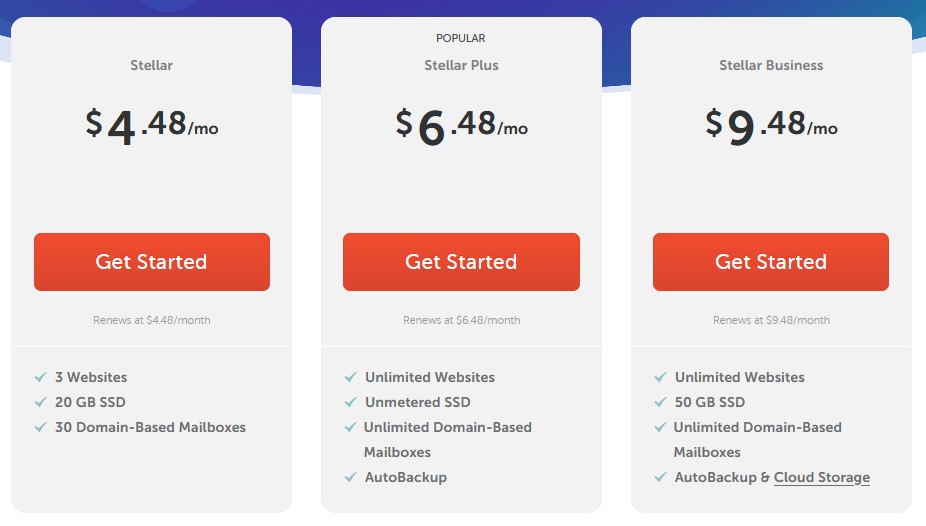
On the next page, you can either select your domain name if you purchased one earlier, or register it at the same time as buying your hosting plan.
Once you’ve placed your web hosting order, you’ll be able to login to your cPanel dashboard and launch cPanel:
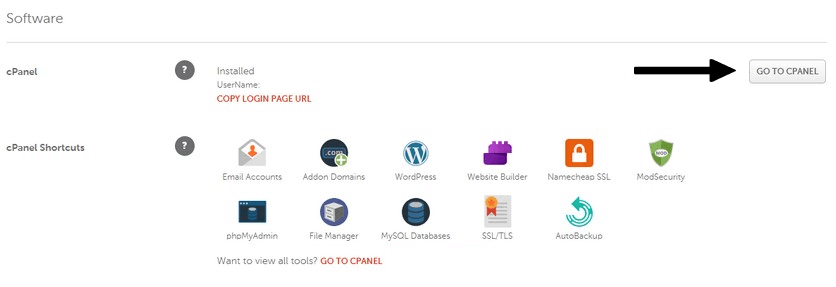
Then install WordPress using the Softaculous script installer:

Go through the steps in the WordPress installation and login to your WordPress admin:
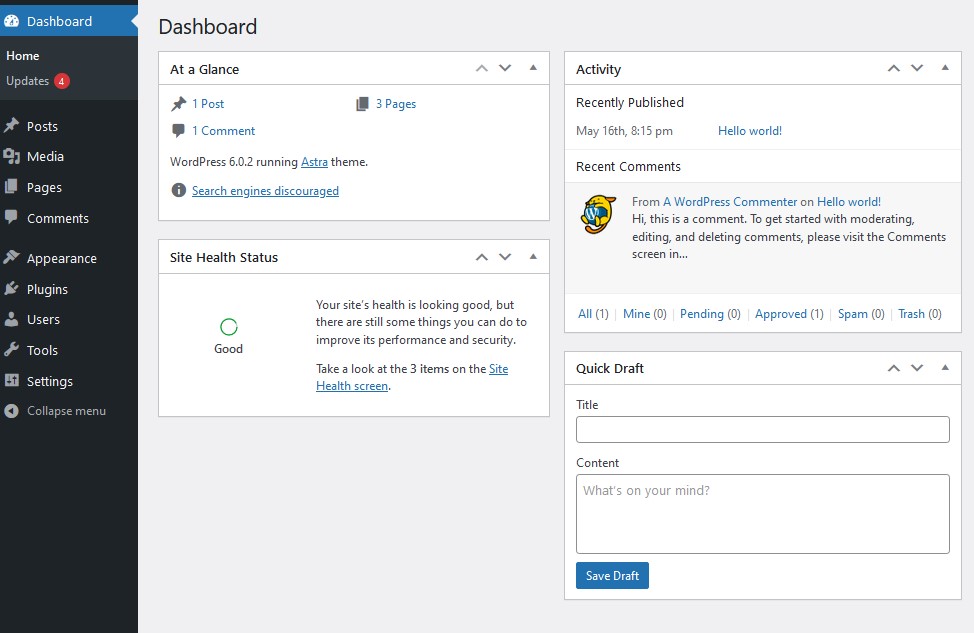
Now you’re ready for the next step, which is to install your blog theme.
4. Choose a WordPress theme
Your WordPress theme makes your review blog look great without needing to know code or web design.
The best and easiest WordPress themes are ones that allow you to choose the features you need instead of being too bulky and confusing to use.
Here are a few options great for a review blog:
- Extra - A premium theme by Elegant Themes which offer all of their plugins and themes for a low membership or a one-off, lifetime payment
- Schema - Has a free and paid version available. It’s fast and minimal. If you want more control over your design, then one of the other options in this list might be better.
- GeneratePress - One of the highest rated and most used themes. Out of the box, the design is quite bare, but has the ability for endless customizations.
- Astra - Another highly popular theme. Similar to GeneratePress, it has a free and paid version that can be designed to your liking.
And for even more options be sure to check out our list of the best SEO friendly WordPress themes.
Once you’ve chosen the theme you want, login to your WordPress dashboard and install it.
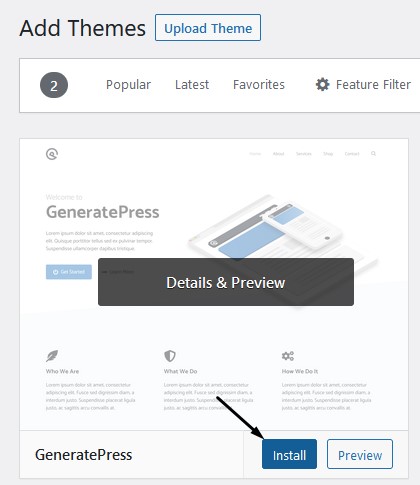
You can change the settings inside the theme customizer to fit your brand:
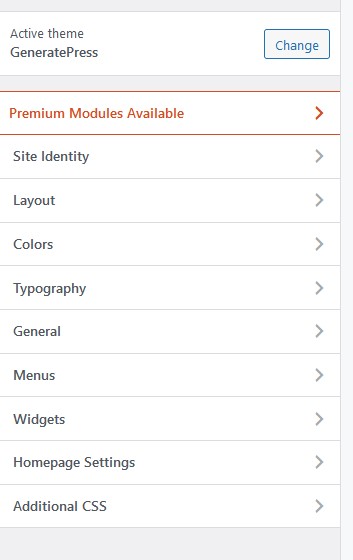
If you upgrade to a premium theme, you’ll get a ton more features available to make the design unique.
5. Install WordPress plugins
WordPress plugins let you extend the functionality of your review blog to make it do more stuff.
Most plugins have a free version with limited features and premium versions give you more options.
Here are the plugins most bloggers will need:
- Rank Math: Helps you optimize your blog posts to make them show up better in search results
- AntiSpamBee: Antispam plugin to stop spam comments
- WPRocket: Will make your blog super fast
- Easy Table of Contents: This adds quick links to your blog posts so readers can navigate to different headings of the article
The following plugins will be ideal for a review website:
- AAWP: Adds product review boxes for Amazon affiliates
- WP Review: A product review plugin that lets you add star ratings and product feature boxes to your reviews
It may seem overwhelming at first, but try not to panic and think you need every single plugin that bloggers talk about.
The most important area of a successful review blog is the content.
More on that later in this post.
6. Add your pages
Every blog needs a few key pages that differ from your blog posts.
These include:
- About page
- Contact page
- Earnings disclosure
- Privacy policy
- Start here page (optional)
These pages add more credibility to your site and may be essential when applying to affiliate programs and ad networks.
Some of these are also needed to comply with laws in your country or the location of your primary traffic.
You can make this whole process smoother by purchasing legal templates from Amira Irfan, the owner of the blog ASelfGuru.com.
Amira is a business lawyer helping bloggers keep their blogs legal by providing the correct legal documents on their site.
You can check out her templates here.
7. Perform research to find topic ideas

Now that your review blog is up and running, you need to add content to it.
But what type of posts do you need to create for a review blog?
And how do you find the right blog topic ideas that people want to read?
Follow these basic steps to gather a list of content ideas that readers will love and will drive affiliate commissions.
- Define your list of products to review.
- Use keyword research tools to find keywords.
- Find keywords that contain “best”, “vs”, “review”, etc.
- Review a range of similar products to help readers discover related items.
- Include informational keywords that support review posts with internal links.
To start this process, you need to know the type of products you’re going to review.
Whether it’s Amazon products, software tools, or digital products from Clickbank, define the products first so you can find keywords.
Then, use a keyword research tool such as KeySearch Tool to find individual keywords to help your readers find the best products.
Also, try to gather keywords that are related to each other to build topic clusters on your review blog.
For example, all the products needed for gardening broken into categories such as plants, growing fruit and vegetables, lawn care, pest control, etc.
8. Write product reviews
By this stage, you should have a list of product review ideas and their keywords.
Now it’s time to write each article and publish them on your blog.
As a product review blogger, your job is to provide as much value for your reader as possible.
When someone lands on one of your reviews, you want them to think: “this is exactly what I was looking for” and lead them to make a buying decision.
I go into further detail on how to create a quality product review later in this post, but here’s a quick summary:
- Answer the searchers query ASAP and let them know they’re in the right place.
- Tell the reader which products you’re reviewing along with your top recommendation.
- Describe the benefits of the product's features.
- Include images of the product.
- Make comparisons between the products you’re reviewing.
When you focus on meeting the expectations of the reader and satisfying their needs, you’ll convert more sales, make more commissions, and improve Google keyword rankings.
9. Join affiliate programs
In the early days and months of your review blog, affiliate links aren’t so important, because you won’t have any traffic.
It’s much better to focus on adding your first batch of 20 to 30 articles, then apply to affiliate programs later.
However, if you want to save time having to go back into each article to insert the affiliate link, we have a post to help you find the best affiliate programs here.
What Makes a Great Review Blog
How do you create a review blog that Google and your audience fall in love with?
And how can you increase your chance of success?
If you want to be successful at blogging, you need to be in it for the long haul.
Why?
Because people consume information a lot differently than they did 5 years ago.
As online courses have become more accessible, the depth of information has grown exponentially.
Smart bloggers who want to provide the most value also consume the best information, integrate it into their lives, then teach it to their readers.
So, instead of publishing random product reviews, create clusters of content that cover a larger outcome.
For example, a person searching for “best home gym flooring for garage” wants to buy gym flooring for their garage, but they also want to turn their entire garage into a gym.
That’s their big picture goal: to build a home gym in their garage.
If you create a cluster of content, intending to help the reader achieve a big picture goal, your blog becomes a powerhouse of information, much like a book or online course.
This is how you differentiate your blog from the rest of the competition.
With this in mind, when performing keyword research, look out for big picture outcomes you can turn into topic clusters (don't miss our list of keyword grouping tools here).
Develop a blog content strategy to fulfill a broader need, creating internal links between clusters that turn flyby readers into raving fans.
Here are a few key factors needed to create an awesome review blog.
Quality Product Reviews
The driving force behind any blog is the content.
We are living in an information age where consumers connect with brands through content on social media, video streaming platforms, and blogs.
If your main source of income is through affiliate or ad revenue, then you need a lot of quality content to drive enough traffic to make enough money.
Some Informational Content
There’s some debate about a recent Google algorithm update that hit many review blogs that only focused on review content.
It’s unverifiable of course, but it makes sense why Google would favor review sites with a mixture of commercial and educational content.
Informative posts also seem to get more backlinks than review content, so it’s a good idea to include them if you can.
Expertise and Authority
With Google’s recent algorithm updates and their emphasis on E.A.T (Expertise, Authoritativeness, and Trustworthiness), it’s clear they want bloggers to focus on the reader, instead of optimizing for the search results.
That being said, the more you can come across as an industry expert, the better.
If you’re not an expert, don’t worry, Google mentions the following in their product reviews update article:
“The overall focus is on providing users with content that provides insightful analysis and original research, and is written by experts or enthusiasts who know the topic well.”
Here are just a few ways you can establish more authority and expertise:
- Grow a following of loyal readers through your newsletter (get tips on how to start a newsletter side hustle here).
- Start a YouTube channel.
- Use social media to engage with your readers.
Good Branding
Google branding speaks a thousand words in business and this is also true with a blog.
There’s about 31.7 million bloggers in the US alone and the best way to differentiate yourself is with unique and professional branding.
Don’t be alarmed in the early days. In order to succeed, it isn’t vital for you to perfect your branding right out the gate.
But when you’re ready to differentiate yourself from other blogs, it doesn’t have to cost a fortune.
There are thousands of WordPress design tutorials on YouTube if you fancy doing it yourself.
You can also differentiate your blog in other ways, such as niching down, creating a unique selling proposition, and being clear about who your audience is.
Tracking Blog Performance
This tip is more behind the scenes of your blog, because it requires you to know how your blog is performing.
When you install Google Analytics and track engagement metrics, you know which articles are doing well (and not so well) so that you can repeat what’s working and improve what isn’t.
Review Blog Examples
Want to see what a review blog looks like?
Here are some successful review blog examples, so you can get a better idea of how to build your own.
Niche Pursuits - Software Review Blog
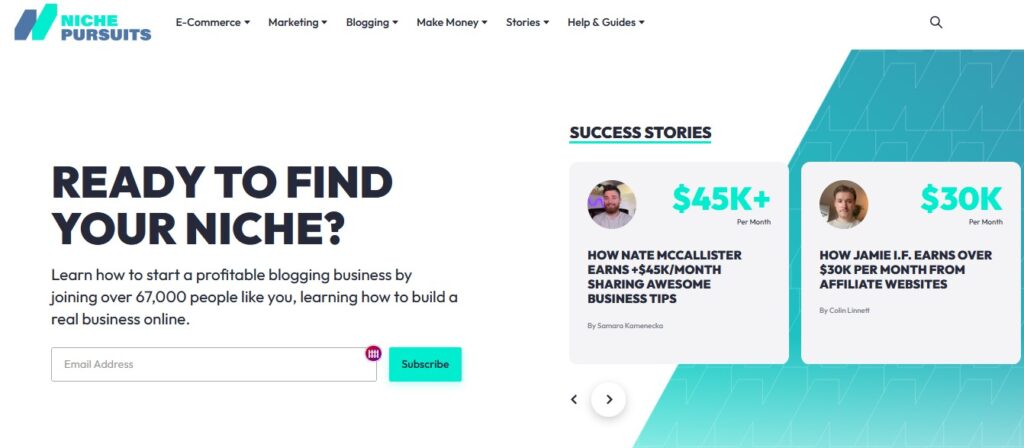
Niche Pursuits now publishes tons of reviews in the online business niche.
From AI software and digital marketing tools to online courses and WordPress plugins, the site you’re on right now is the perfect example of a review site.
For some great review post examples, check out the list below:
The Wire Cutter - Multi-Product Review Blog
The Wire Cutter is an excellent case study because it started out as an ordinary review blog back in 2011.
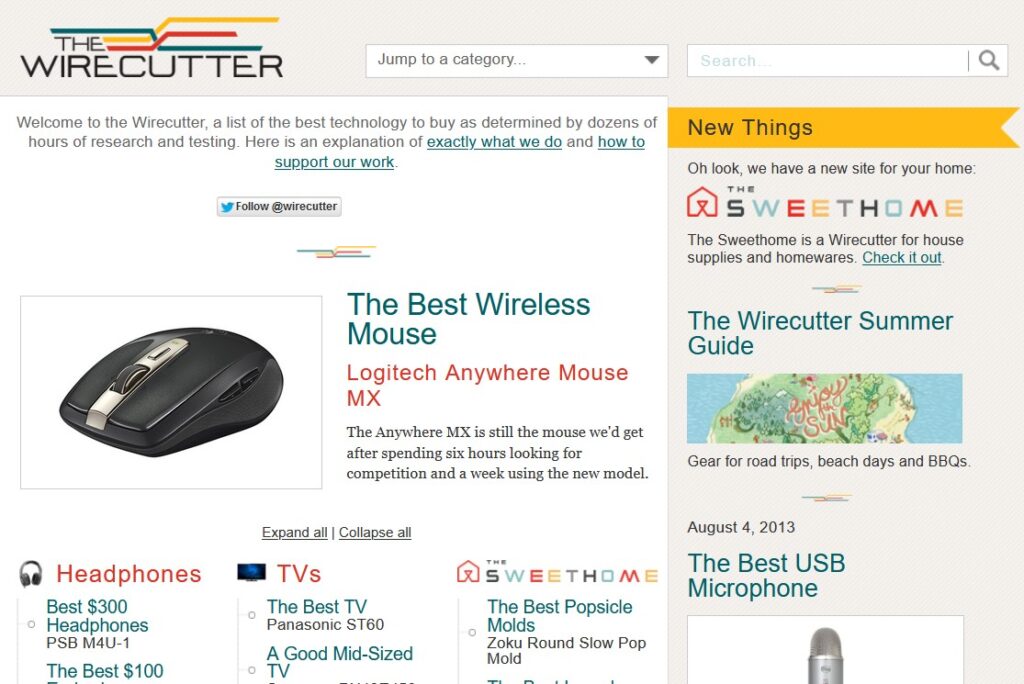
Five years later, it was purchased by The New York Times for 30 million dollars.
The now multi-product review website, which redirects to www.nytimes.com/wirecutter, publishes in-depth reviews on tech, sleep, travel, pets, and everything in between.
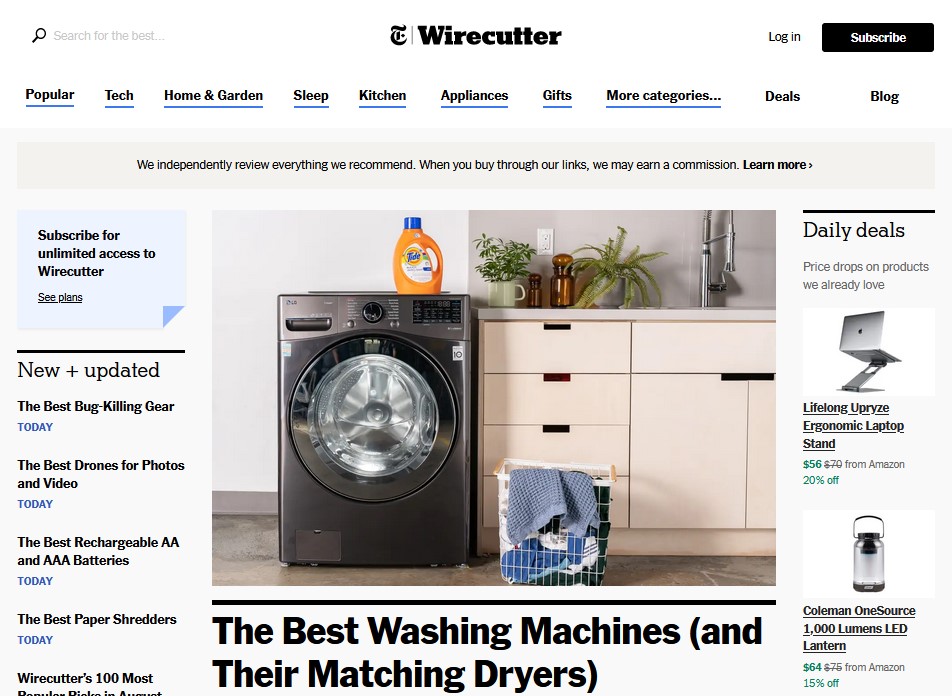
10Beasts - Tech Review Blog
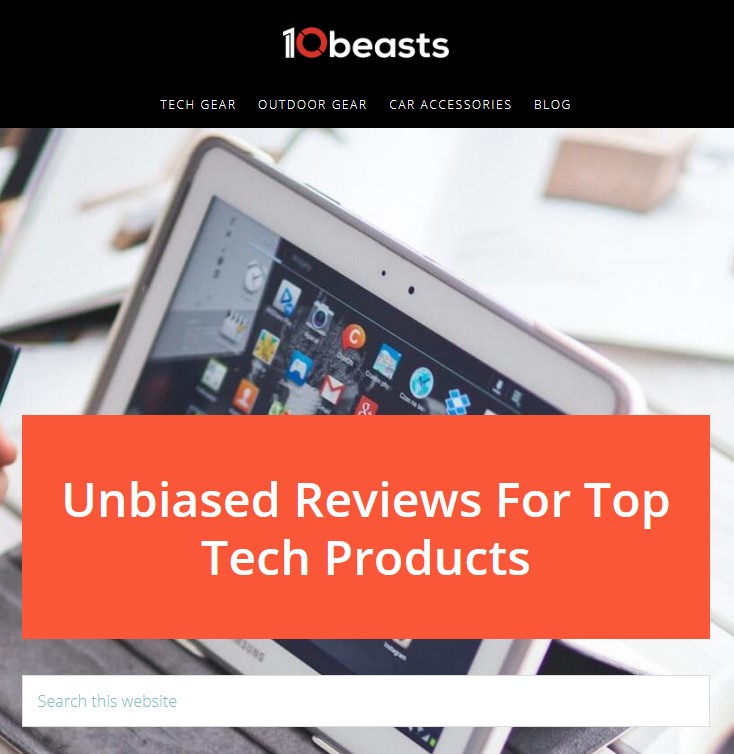
Another brilliant success story is a review site that hit $40,000 in monthly affiliate commissions in its eighth month.
The owner sold 10Beasts for $500,000+ within 2 years of launching the site.
10Beasts is still active today reviewing products on outdoor gear, car accessories, and tech.
Meal Prepify - Food Review Blog
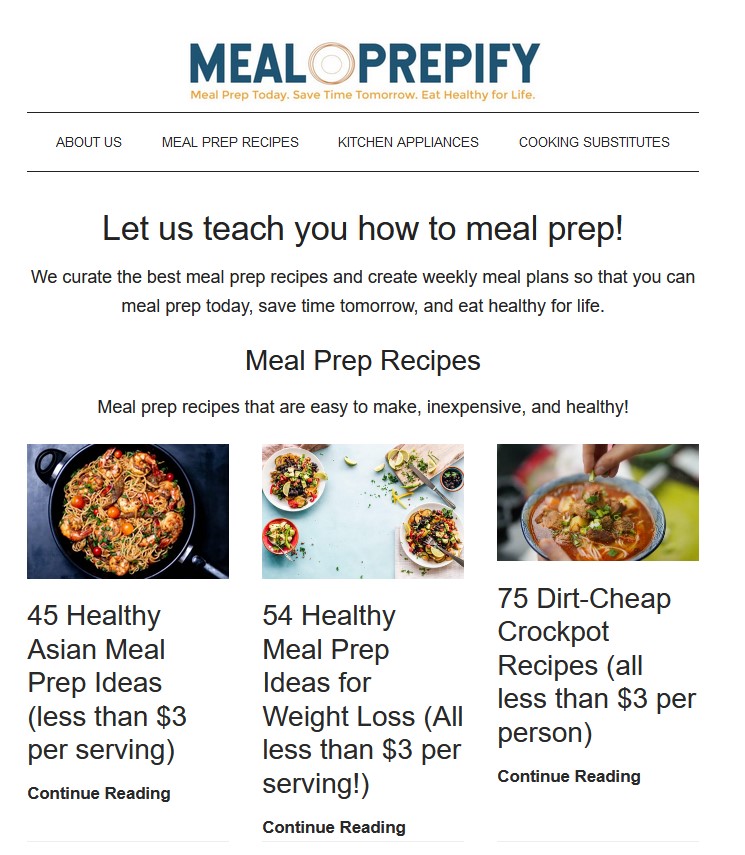
I really like this food review blog example because it’s not your typical female-owned food blog.
Meal Prepify is run by Rich who, in his own words, “cooks an obscene amount of food”.
This blog helps people save time, save money, and eat healthier, and reviews a wide range of kitchen appliances.
How to Write Quality Product Reviews According to Google
Google recently published an article outlining details for creating review type content. These tie in with their product reviews algorithm update.
The document lists extensive criteria for making product review content as valuable as possible.
I’ve categorized the list into five recurring themes, with the number of times they occur in the article.
- Insights (2) - Share details about the product from a user’s perspective or design choices beyond what the manufacturer says.
- Expertise (2) - Demonstrate knowledge and expertise of the product.
- Usefulness (5) - Provide useful details about products beyond what the manufacturers say, such as quantitative data, links to multiple sellers, linked resources, and differentiate performance factors (e.g. fuel economy, safety, and handling in a car review.).
- Comparison (3) - Compare between use cases, other brands, and previous models.
- Original Research (2) - Discuss the pros, cons, and reasons for recommending best overall products based on first-hand supporting evidence.
Interestingly, expertise about the product, insight into the product, and original research only show up twice each.
The category with the most mentions is usefulness, which basically means, how useful is the product review?
Then the second most recurring theme is comparison, detailing how products differ from each other, from previous models, and how they stack up against other brands.
In summary, Google wants product reviews to be useful, share comparable data, contain original research, provide user insights and your level of expertise.
All these criteria would be easy to meet if you were buying products and reviewing them directly, but that might not be necessary if you’re creative enough.
Try to meet the guidelines Google has provided to the best of your ability and make changes until you find what works best for you.
How to Monetize a Review Blog Successfully
There was a day when you could throw up a review blog in a few hours, add a handful of articles, spam it with backlinks, and start making money within a few weeks.
Fortunately, that no longer works which is a good thing for many reasons. Mainly because it’s not a sustainable business model and only makes the internet terrible.
With that said, what are the best ways to monetize a review blog today?
Apart from affiliate marketing being the most obvious, here are additional ways to make money with a review site.
Display Ads
A lot of review bloggers miss the opportunity to earn income through display ads.
It’s very easy to get started with either Google Adsense or Ezoic.
Digital Products
How about selling a digital product to help your readers use the tech you review?
For example, if your review blog is about graphics cards and video editing software, you could create a course teaching people how to edit a video for YouTube.
Start a YouTube Channel
Instead of just posting articles on your blog, you can also review them on YouTube.
Once you reach the threshold, you can monetize your channel with ads and affiliate commission.
Get Started Today
That concludes this post on how to start a review blog.
Admittedly, there’s a lot to work on, but you only need to focus on one thing at a time.
Once you complete the initial steps and find some content ideas, get into the habit of writing great content every day.
For more tips to get the most out of your review blog, read how to be successful at blogging.
Want to learn step-by-step how I built my Niche Site Empire up to a full-time income?
Yes! I Love to Learn
Learn How I Built My Niche Site Empire to a Full-time Income
- How to Pick the Right Keywords at the START, and avoid the losers
- How to Scale and Outsource 90% of the Work, Allowing Your Empire to GROW Without You
- How to Build a Site That Gets REAL TRAFFIC FROM GOOGLE (every. single. day.)
- Subscribe to the Niche Pursuits Newsletter delivered with value 3X per week
My top recommendations
















